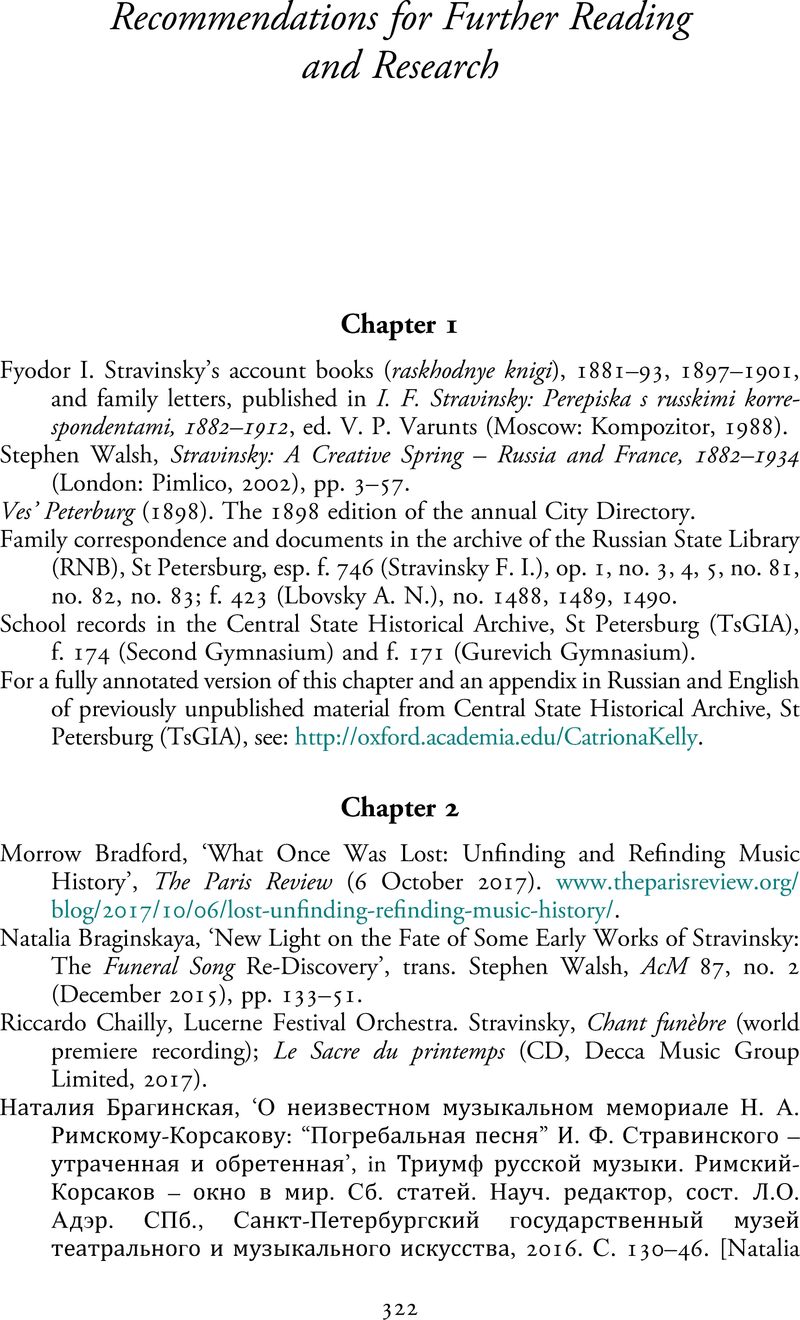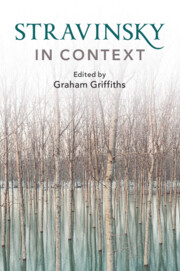Book contents
- Stravinsky in Context
- Composers in Context
- Stravinsky in Context
- Copyright page
- Contents
- Illustrations
- Contributors
- Preface
- Abbreviations
- Frontispiece
- Epigraph
- Part I Russia and Identity
- Part II Stravinsky and Europe
- Part III Partnerships and Authorship
- Part IV Performance and Performers
- Part V Aesthetics and Politics
- Part VI Reception and Legacy
- Recommendations for Further Reading and Research
- Index
- Endmatter
- References
Recommendations for Further Reading and Research
Published online by Cambridge University Press: 03 December 2020
- Stravinsky in Context
- Composers in Context
- Stravinsky in Context
- Copyright page
- Contents
- Illustrations
- Contributors
- Preface
- Abbreviations
- Frontispiece
- Epigraph
- Part I Russia and Identity
- Part II Stravinsky and Europe
- Part III Partnerships and Authorship
- Part IV Performance and Performers
- Part V Aesthetics and Politics
- Part VI Reception and Legacy
- Recommendations for Further Reading and Research
- Index
- Endmatter
- References
Summary

- Type
- Chapter
- Information
- Stravinsky in Context , pp. 322 - 340Publisher: Cambridge University PressPrint publication year: 2020



